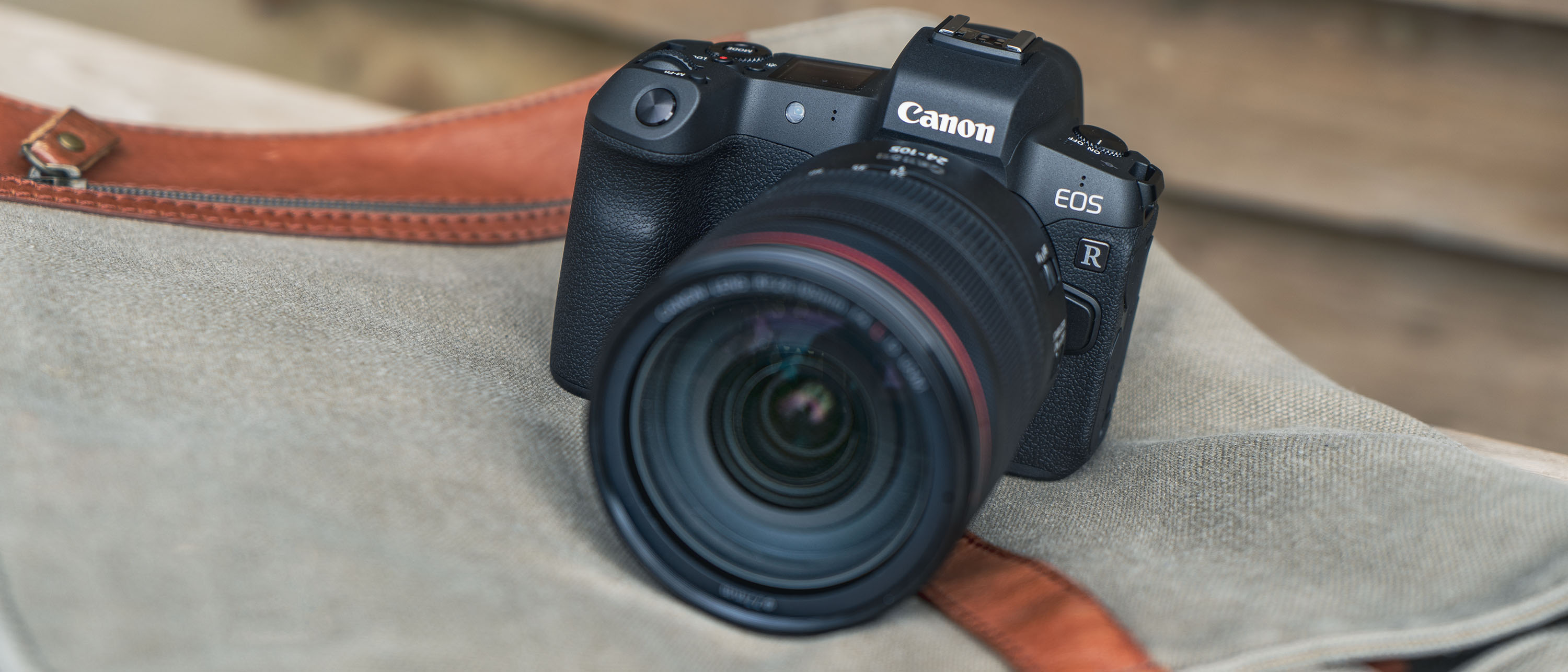Why you can trust TechRadar
Canon EOS R review: build and handling
- Magnesium alloy body
- Weather resistance
- New control bar
The styling of the EOS R is somewhere between an EOS DSLR and Samsung's underrated NX1 mirrorless camera.
The body of the EOS R has a pleasing matte finish, with a magnesium alloy body and magnesium shell. Combine this durable construction with a DSLR-sized handgrip and it certainly feels very well made. A side-by-side comparison with the similarly sized EOS 5D Mark IV, though, shows that, while thinner, the EOS R isn't hugely smaller, and feels very similar in the hand to something like an EOS 6D Mark II.
This might be good news for many Canon users, who will no doubt welcome the EOS R's familiarity, as it means they get the same great handling they already enjoy, and also better support for longer and/or heavier lenses. That said, if you're after a mirrorless camera for its smaller size over a DSLR, you may not find as great a difference as you might imagine.
Canon has tried to maintain a similar button layout and user interface to its existing range of DSLRs, so it should be familiar to those already at home with the EOS ecosystem. There are a few little differences though, some good and some bad.
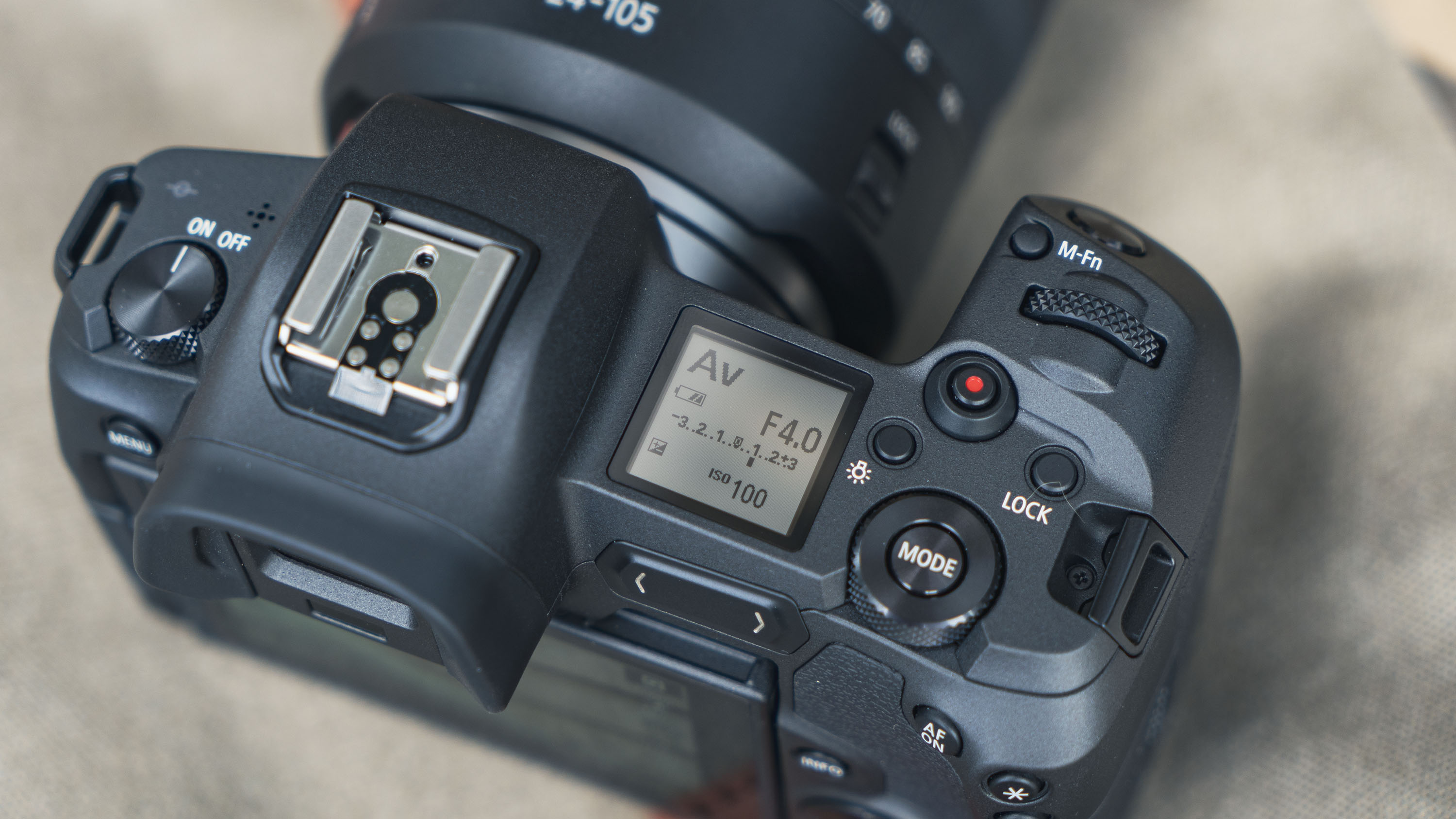
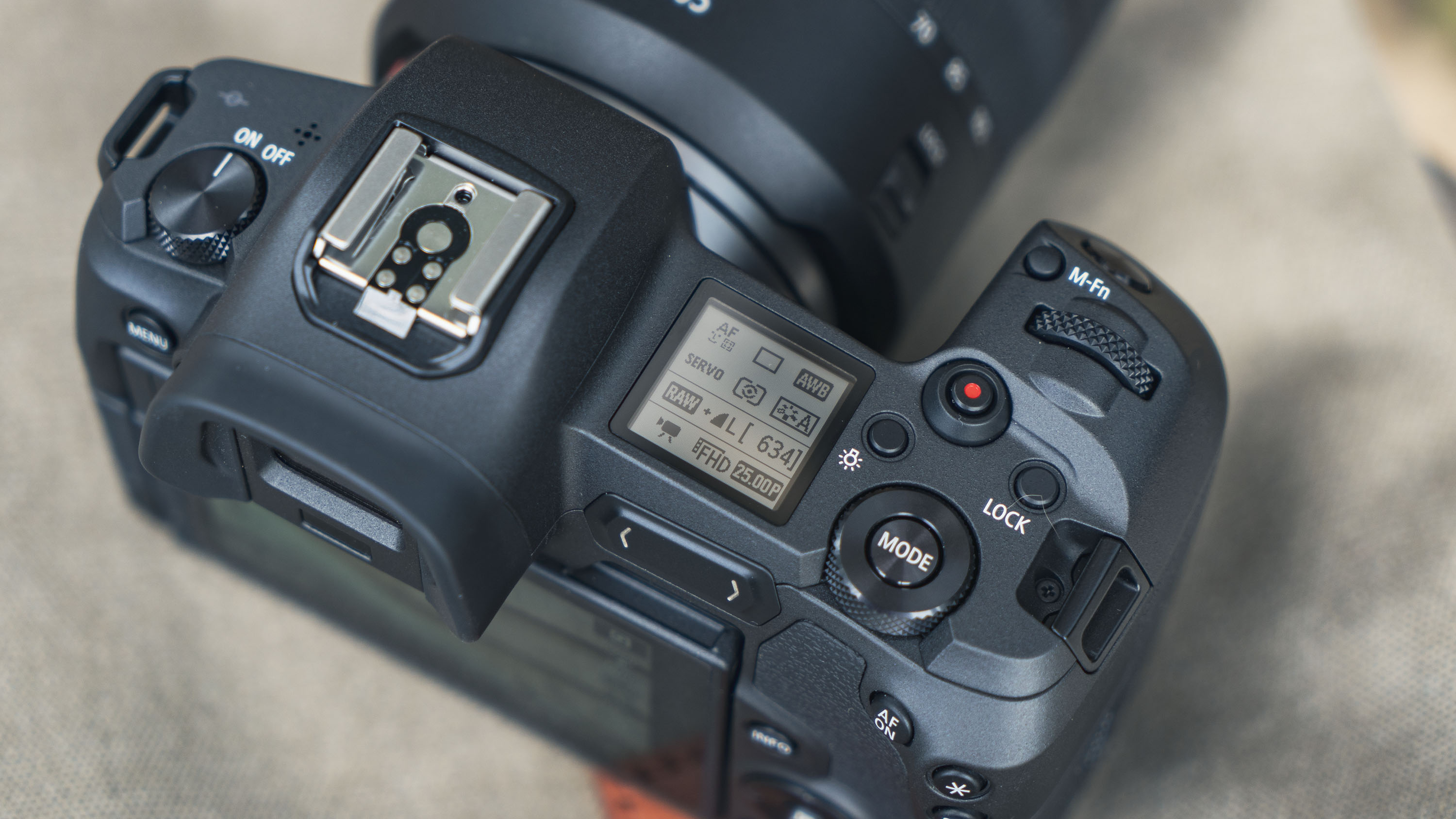
One feature we particularly like is the new top-plate LCD screen, not simply because it presents key information at a glance, but because it shows more information than expected, and has a little more thought behind its implementation.
For example, pressing the lamp button illuminates the screen, but you need to hold it down for a little longer than usual. The reason? Pressing it quickly brings up a screen which provides secondary shooting options (the primary ones shown at default being aperture, shutter speed and so on). It's a clever use of existing and familiar controls, even if the lamp button is a little small, and not prominent enough for the most comfortable operation.
On the flip-side is the new (and snappily named) M-Fn control bar
If this screen is a welcome feature, less impressive is the new (and snappily named) M-Fn control bar, located just below the top-plate screen on the rear of the camera. How does it work? The control bar can be customized to access different settings on the EOS R, and it responds to swipes and taps – so drag your thumb over it and you can zip through the ISO range, or scroll through white balance settings, or something else.
However, while Canon should be applauded for trying something new, we didn't really get used to this control, and we reckon many users would prefer that Canon had used the space the control bar takes up for a joystick-type AF lever.
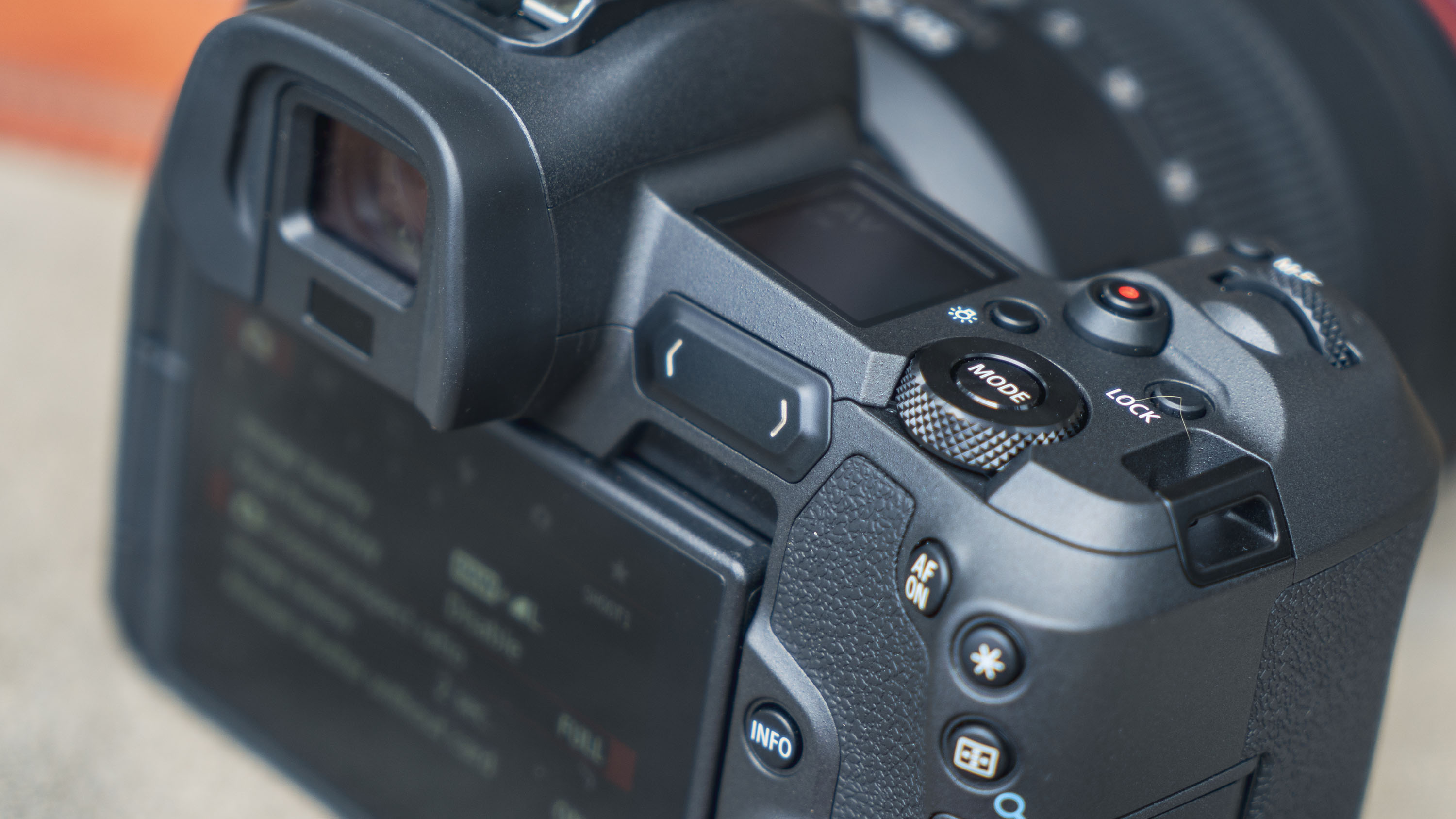
Canon EOS R review: autofocus
- 5,655 phase-detect AF points
- -6 to 18EV working range
- Dual Pixel CMOS AF
Canon's Dual Pixel CMOS AF system has impressed when we've used it on recent EOS DSLRs (as well as on Canon's EOS M mirrorless range) for Live View focusing, and the enhanced version of this system found on the EOS R is one of the camera's main highlights.
This sees a phase-detect AF system with a staggering 5,655 points (that's not a typo, there are 5,655 selectable positions), with 88% vertical and 100% horizontal coverage, and a working range that goes as low as -6EV (with an f/1.2 lens).
Paired with the new RF 24-105mm f/4L IS USM lens, the EOS R powered through its focusing range at speed, making focusing between different distances straightforward and fast.
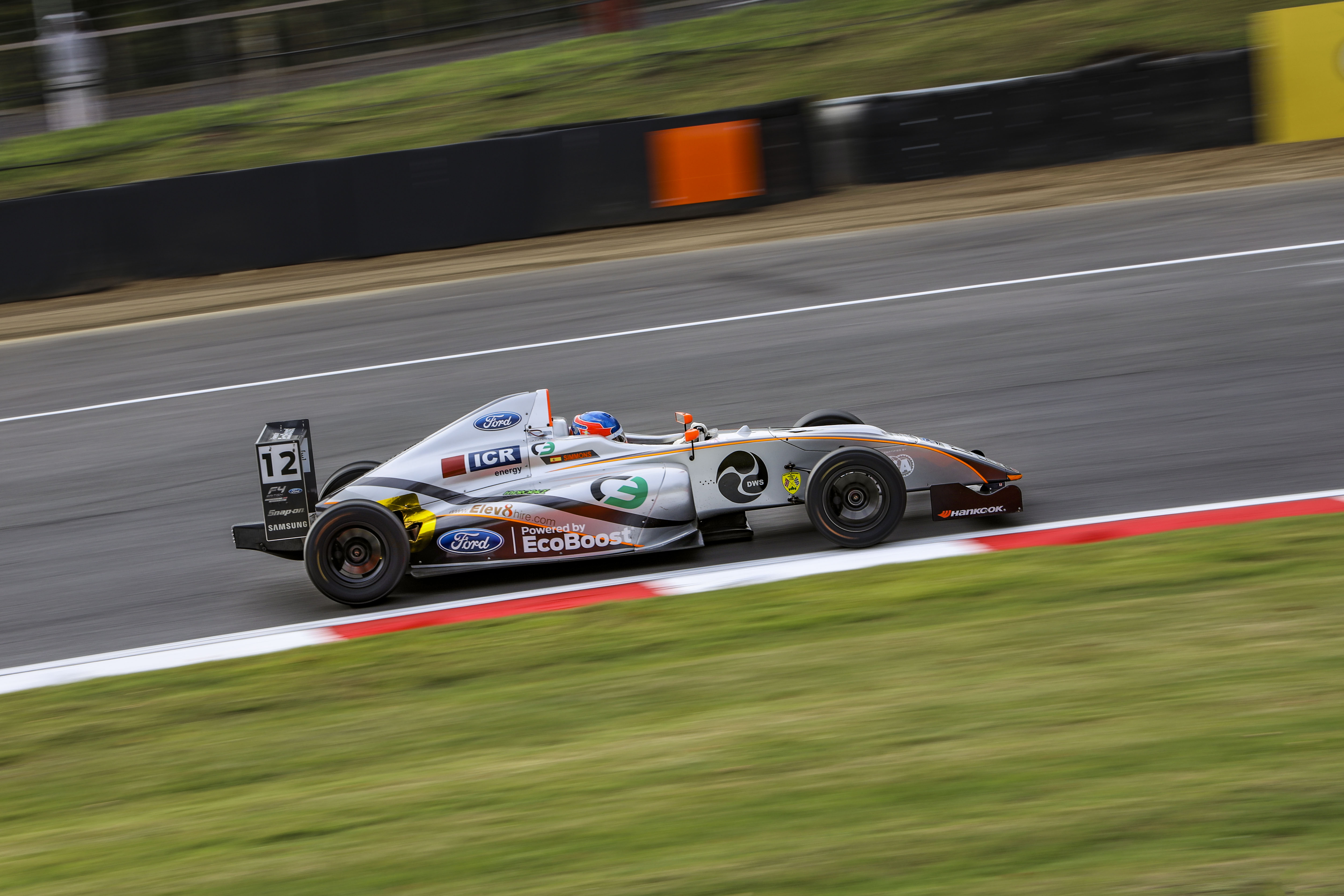
The autofocus system also did a brilliant job of identifying eyes when set to track faces, even when the subject wasn't looking directly at the camera, either looking down or side-on. This worked a little less impressively in sub-par lighting conditions, but we imagine people will be pleased with how well the AF manages to pick out and lock onto eyes when shooting everyday portraits.
Focus tracking was also very effective, doing a good job of keeping up with fast-moving cars when we tested the camera at a motorsports circuit. Our major gripe, though, is the absence of the AF lever found on Canon's more advanced DSLRs; instead you have to rely on using the EOS R's rear touchscreen to select the AF point you want.
Current page: Build, handling and AF
Prev Page Introduction and key features Next Page Performance and image qualityPhil Hall is an experienced writer and editor having worked on some of the largest photography magazines in the UK, and now edit the photography channel of TechRadar, the UK's biggest tech website and one of the largest in the world. He has also worked on numerous commercial projects, including working with manufacturers like Nikon and Fujifilm on bespoke printed and online camera guides, as well as writing technique blogs and copy for the John Lewis Technology guide.
